As this review takes shape, Christopher Nolan’s latest high- concept, high- stakes Sci-Fi blockbuster Tenet has just released. However, without a home IMAX screen to fully appreciate it, Nolan’s unique brand of tech- heavy, big budget, brainy bombast might not be everyone’s cup of tea. The time might just be right for a plucky, small- budget indie sci-fi like 2009’s Moon to come along and teach the big boys a thing or two about emotional, cerebral storytelling. Regrettably, Solitary is not that film.
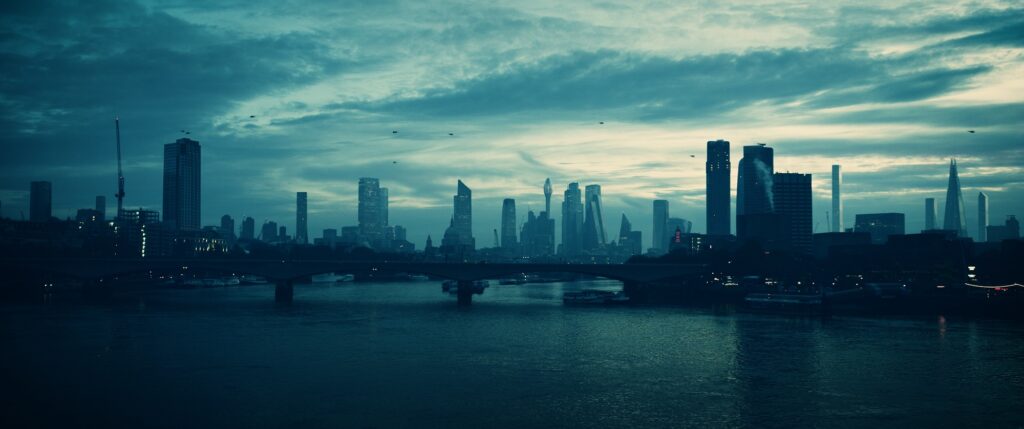
The feature debut of visual effects artist Luke Armstrong concerns recently convicted felon Isaac Havelock (Johnny Sachon), who awakes one day to find himself imprisoned on a small spacecraft with a one way ticket to ‘Earth’s first off- world colony’. After a catastrophic explosion on board a larger transport ship, Havelock and cell-mate Alana Skill (Lottie Tolhurst) suddenly find themselves adrift in space, with fewer remaining options than an Amish phone sex hotline.
Solitary begins by informing us that “The year is 2044”, “the global population has exploded”, “resources are low” and “the planet is dying”, on screens which are intercut with some admittedly striking shots of a futuristic London, replete with flying cars and extravagant flying car noises. During a pre-imprisonment walk around the city, Isaac (one of the remaining, unexploded members of the population) attracts the attention of some nearby armed goons — kicking off a chase scene with all the tension of a nice, relaxing bath — and subsequently gets himself apprehended behind an ISO container.
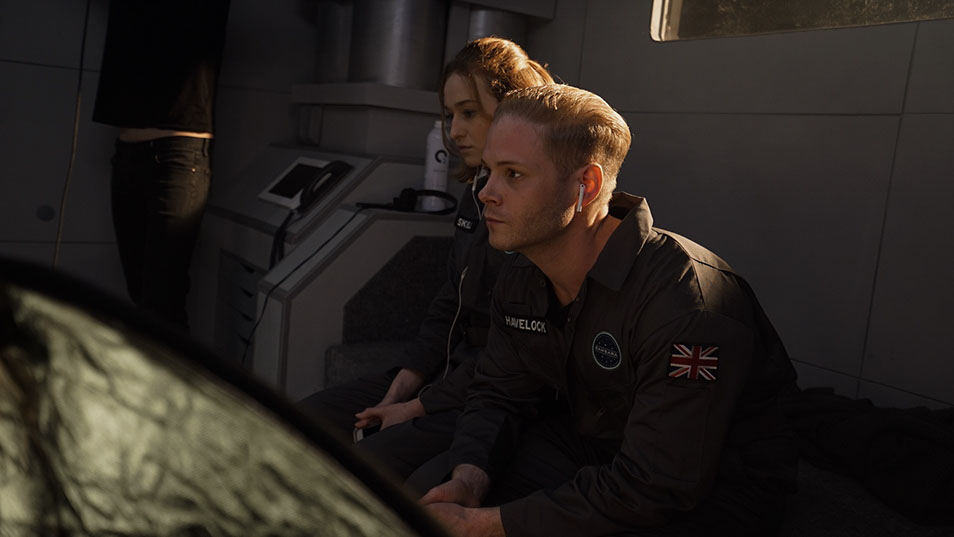
Sachon lacks the grit or conviction to be credible as an ex-military man, and looks like he’d be more suited to managing a branch of Carphone Warehouse than storming an embassy. This opening sequence feels like a microcosm of the film as a whole: it has ambition, and displays a tantalisingly professional aesthetic and an understanding of visual storytelling, but at its core has a serious quality control problem, which impacts on the performances, dialogue, world- building and narrative logic of the whole.
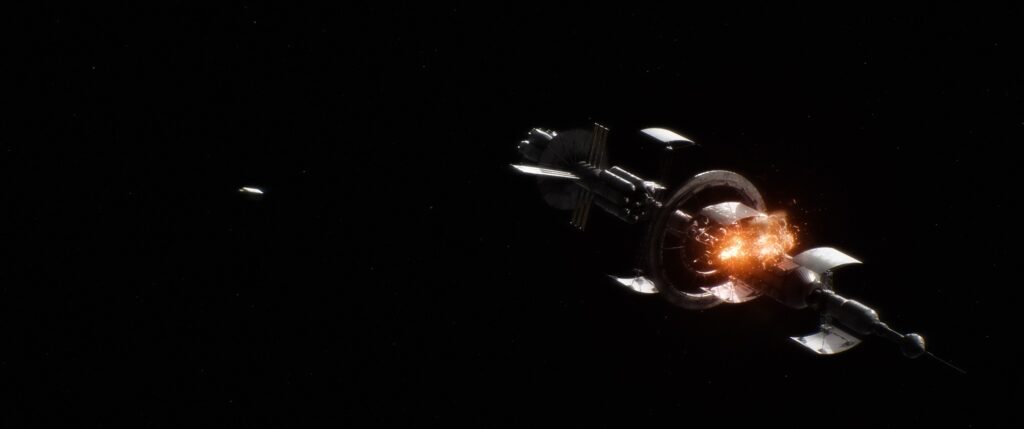
Unfortunately, these issues become impossible to overlook when the film narrows its focus, and the action moves to the cramped confines of the spacecraft. Successful ‘single location’ movies like 12 Angry Men, Locke, Free Fire and Buried all feature shifting power dynamics, tease plot revelations through rich, well- observed, efficient dialogue and often boast a varied cast of inter-connected characters. Solitary is simply far too light on both plot and character to stand alongside any of these films: most of the action takes place in the first fifteen minutes, and the rest of the runtime is dedicated to awkward, stilted discussions and faux-philosophical dialogue like “A man did something to me. So I did something to him” and “Who cares about the news anyway? Money, death, the environment, blah blah blah…”
Alana is meant to act as a morally ambiguous foil to Isaac; instead she is a one-dimensionally ‘enigmatic’ femme fatale-type who splits her time between pouting, delivering needlessly vague exposition and revealing herself as a murdering psychopath. Similarly, when things get stressful, Isaac is less a desperate, relatable protagonist in crisis than he is an entitled, unsympathetic goon shouting at the people who are trying to help him.
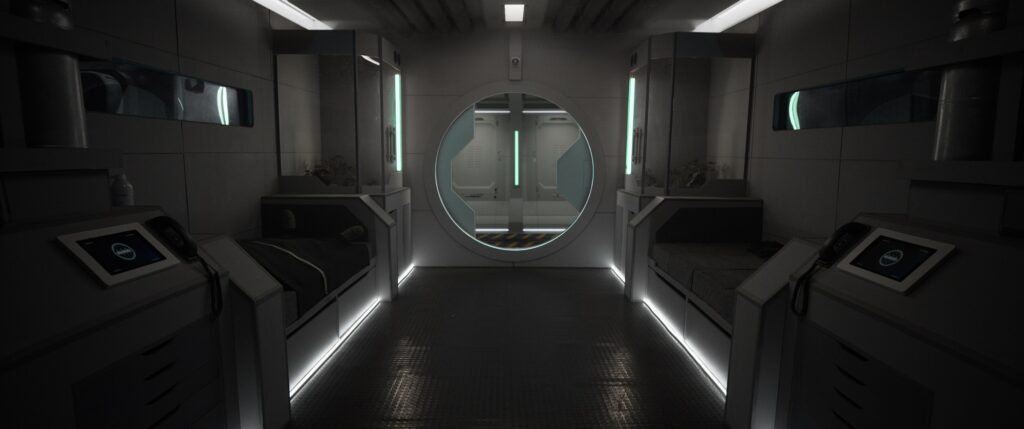
The supporting cast don’t fare much better either: one scene featuring a news report on the ethics of forcefully sending prisoners into space features some very obvious overdubbing, and the moral quandary at the centre of the plot is discussed with the all intellectual profundity of a pair of Coldplay fans. There are so many avenues that could have been explored within this concept: the ethics of using prisoners as an unpaid workforce, the punishment vs rehabilitation discussion or the colonial legacy of forcefully relocating prisoners, but Armstrong seems more interested in scenes about fixing minor hull damage, limp sexual tension or fleshing out Havelock and Alana’s shady backstories.
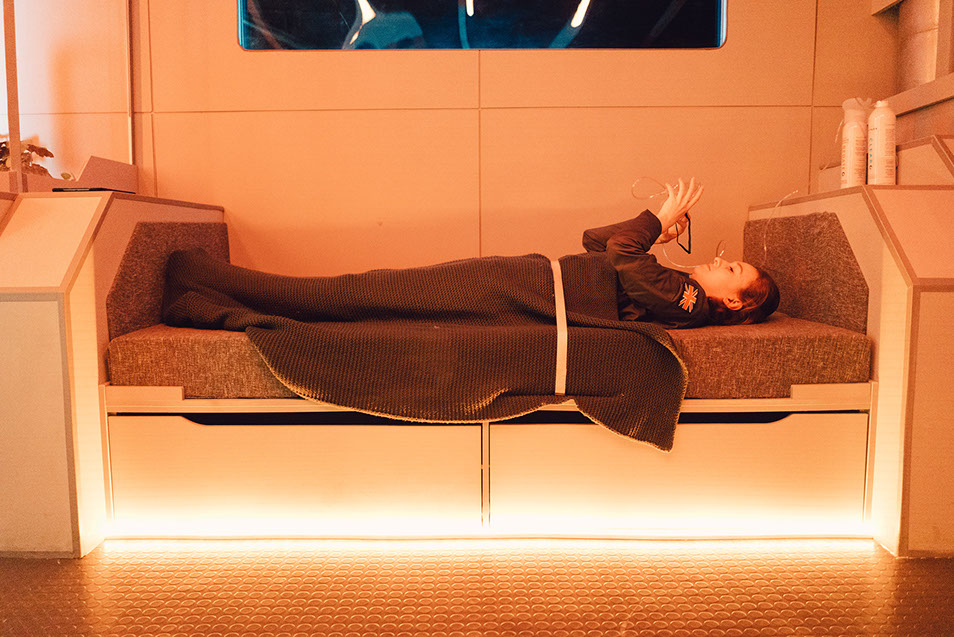
Considering Solitary gets so many things wrong, it’s important to focus on what it does right: the film sounds and looks great. Thanks to Armstrong’s history in VFX (having worked on The Witcher, Avengers: Endgame and Skyfall, among others) and the work of cinematographer Jack Booth, Solitary occasionally pulls off marvels with its minuscule budget. The infrequent outer space shots are quietly impressive, cleverly using light and negative space to infer motion against the inky blackness. Shot compositions are also confident and clear, and the whole movie is mercifully free of shaky camwork and hyperactive editing.
Similarly, Vince Cox’s soundtrack — while not particularly memorable or ground-breaking — is also bleakly effective; a techy, minimalist endeavour that finds its niche between the ominous, buzzing synths of Blade Runner and the pulsating, dramatic waves of sound from Alfonso Cuaron’s Gravity.
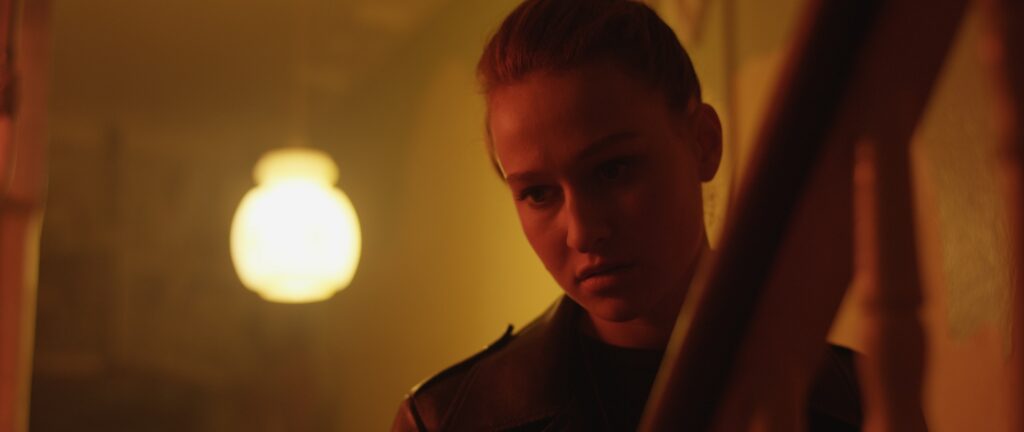
Despite some high production values and a commendable amount of ambition, mediocre performances, script inconsistencies and a lack of dramatic tension all give Solitary a distinctly amateurish feel. Armstrong shows genuine talent as a visual director, and deserves to work with bigger budgets and more accomplished scripts, but his lack of rigour when it comes to almost every other element of film-making prevents Solitary from ever progressing past its flaws.
Also — not to nit-pick — but it’s called Solitary, yet no-one ever actually spends any time alone.
Solitary releases August 31st.
